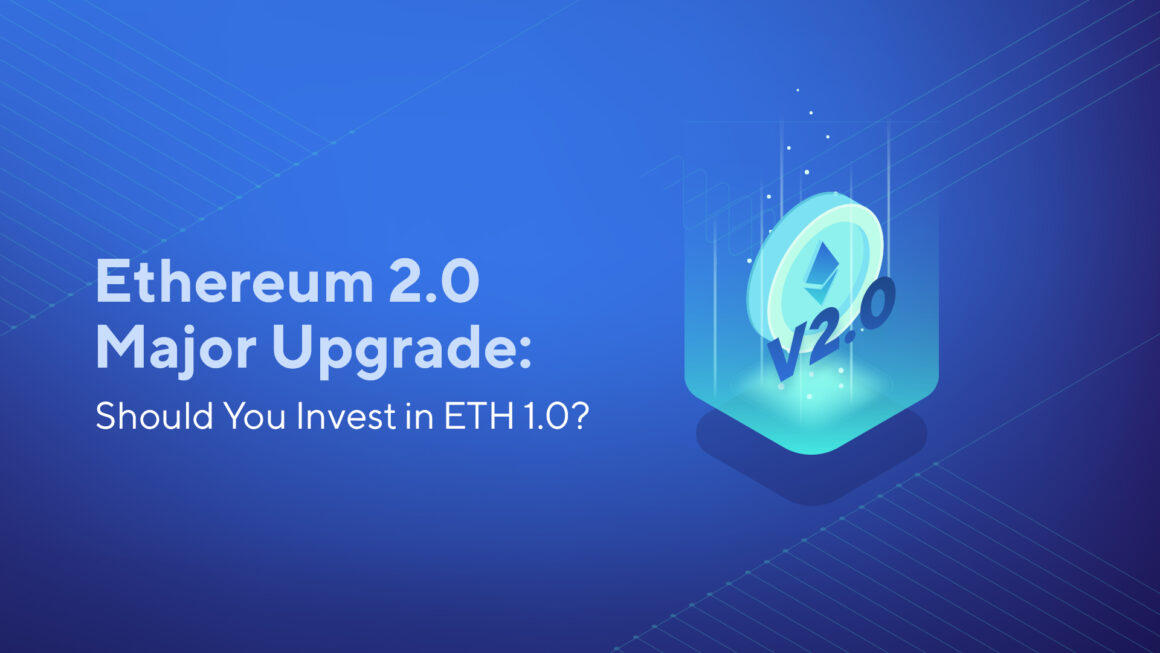Ethereum cryptocurrency is one of the most well-known ones and always ranks second after Bitcoin by market cap. This is particularly due to guaranteed security and the use of smart contracts. This gives users an opportunity to release their own app on the blockchain as well as to create ERC20 tokens. After updating to Ethereum 2.0, the blockchain will be able to function even more efficiently.
Ethereum is an open-source peer-to-peer system that allows users to engage in direct exchange with each other not relying on a central server. The Ethereum Blockchain is a complex database constantly tested by participants.
The development team led by Vitalik Buterin has been working on the project since 2015. They have been able to create some outstanding innovations over the years. The creation of new tokens according to the ERC20 standard has already been available for numerous cryptocurrencies, including Chainlink (LINK).
The latest development of the network is expected in 2020, namely an upgrade from Ethereum 1.0 to Ethereum 2.0. An upgrade should include some new functions in the protocol, which could offer new advantages, especially for investors and users.
How Does Ethereum 2.0 Work?
Solidity is generally used as a programming language on Ethereum. It was specially developed for the creation of smart contracts. However, numerous other programming languages can also be created in Ethereum Virtual Machine.
In addition to applications from the field of finance, decentralized organizations (DAO) can also be managed. This can be compared to a digital company that makes all decisions using a certain code. This means that decision-making power lies with all participants and not with a single user. For example, this prevents one user from controlling the opinions of others.
Proof of Stake
A new section on additional features of Ethereum will be available in 2020. This affects the process of mining, as a new algorithm for mining rewards is introduced. This means that all holders of ETH currency can generate residual income. The prerequisite for this is a certain amount of ETH, which is stored in a smart contract and not liquid. So far it’s assumed that the required amount will be 32 ETH.
The Proof of Stake algorithm offers several advantages over the Proof of Work. These include power consumption, even distribution of rewards and independence from monopoly positions in hardware manufacture. Supporters of this idea also argue that Ethereum can use resources more efficiently and thereby achieve more scalability. According to Vitalik Buterin, Ethereum can already process around 100,000 transactions per second.
Beacon Chain
The essential core to achieve scalability is a beacon chain. This chain enables the proof of stake and thus also mechanisms such as sharding, eWasm, and cross-link. The first block of the beacon chain was created on a testnet in April 2020.
The beacon chain takes on the role of a side chain, which takes over a validation for staking. Tasks include administration, provision of random numbers, inclusion of new validators, and security. The beacon chain also determines who can validate the next block, it also rewards good behavior and punishes fraudulent intentions.
Sharding
By dividing the blockchain into individual fragments, nodes no longer have to save the entire blockchain. By distributing it into individual shards, a greater level of scalability can be achieved. Due to increasing size, storing an entire blockchain can be associated with lengthy processes and enormous amounts of data.
Individual shards can, therefore, take on specific tasks and adopt rules of other blockchains. The beacon chain allows all shard chains to be coordinated with one another. This arrangement and interoperability of individual blockchains can lead to a breakthrough in terms of scalability.
For example, Bitcoin and other coins can be easily mapped on the Ethereum Blockchain. According to some sources, there’re already more bitcoins in the Ethereum network than on the Lightning network.
Why Invest in Ethereum 2.0?
Since the transition from Ethereum 1.0 to Ethereum 2.0 is very lengthy and involves several steps, investors don’t have to worry. The basic Ether currency is still the means of payment to act on the blockchain. Unlike many other hard forks, this upgrade doesn’t create a new blockchain or currency.
For this reason, it may make sense to invest in Ethereum before a full update. As soon as the first successes of Ethereum 2.0 become clear, institutional investors will be able to know about the project. Staking in connection with a passive income could serve as a welcome investment with a significant return.
Since Ethereum offers significantly more advantages than other cryptocurrencies, the potential for further growth is far from exhausted. Ethereum also benefits from the success of other projects that are based on the Ethereum Blockchain and pay fees there. The rapid growth of decentralized finance in particular could attract new users and customers.
What do you guys think about the coming ETH update? Just share your opinion in the comments!

Leave a Reply